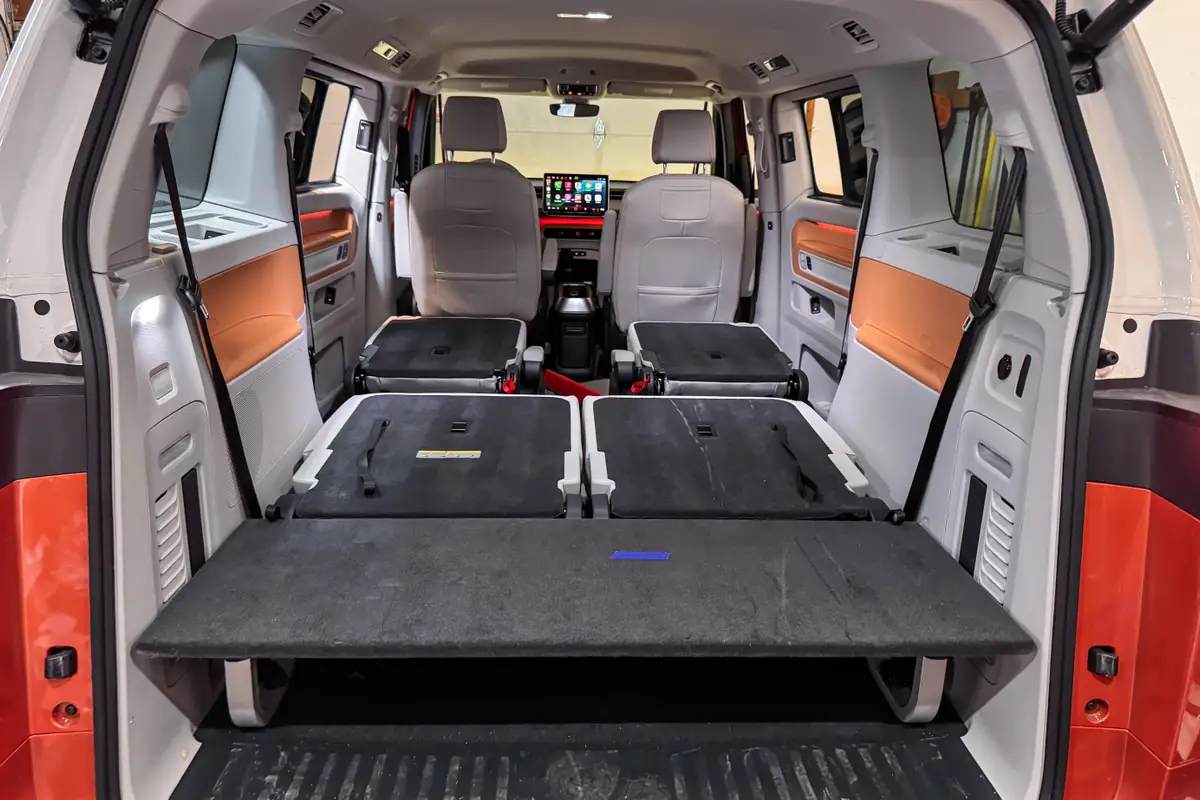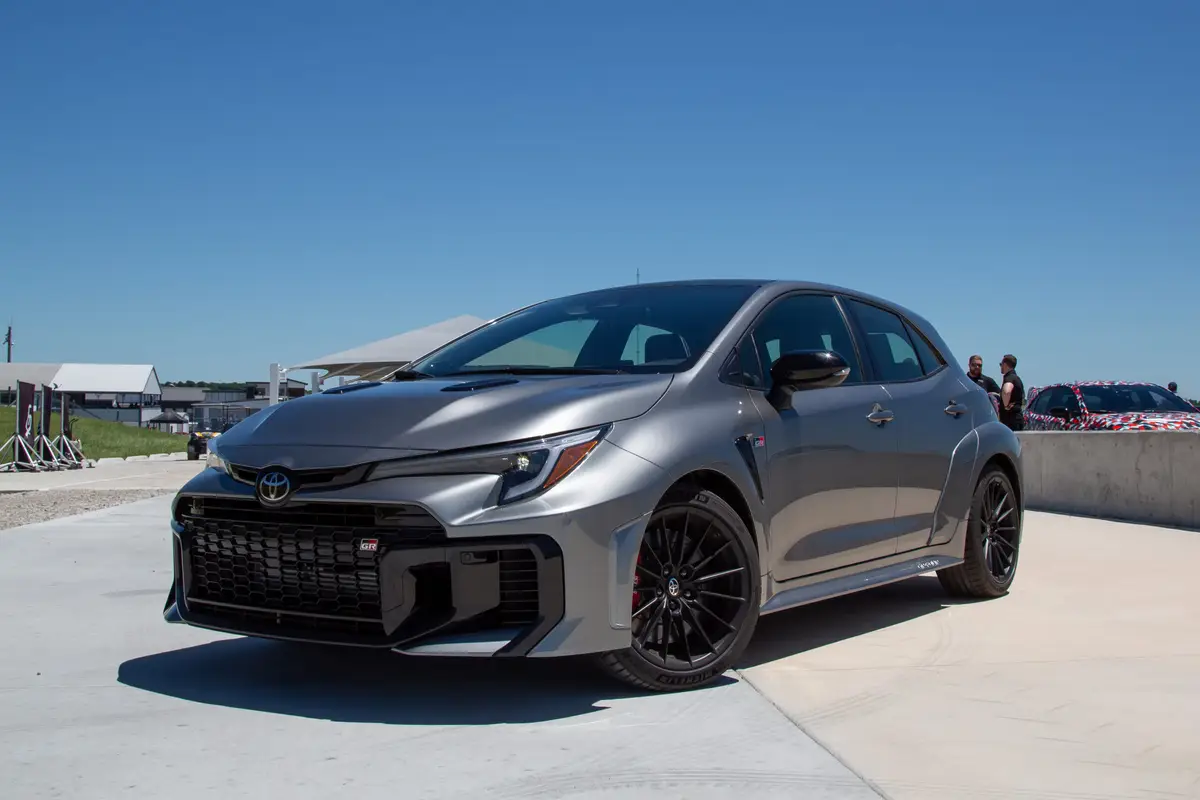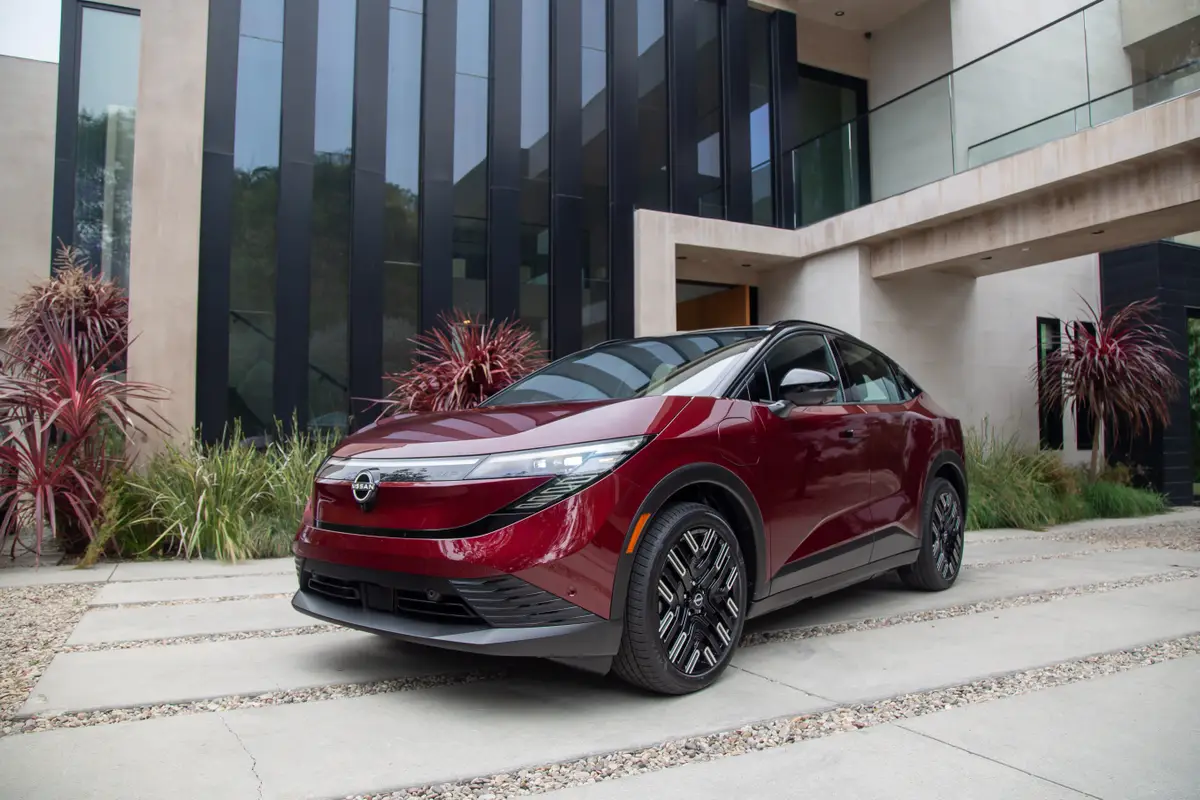2016 Chevrolet Silverado Crew Cab: Car Seat Check

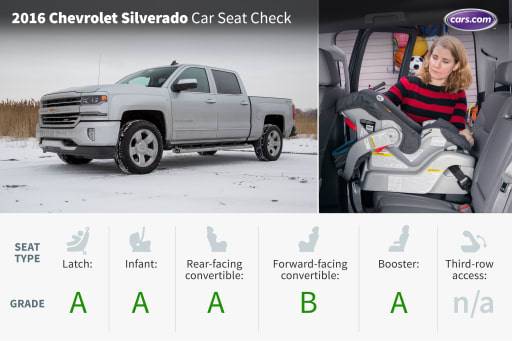
CARS.COM — Full-size pickup trucks can work well for families with up to three children, and we’ve had a lot of success fitting three car seats into full-size crew-cab trucks in our Car Seat Checks. The 2016 Chevrolet Silverado’s roomy backseat fits three car seats with ease, but a scalloped rear center seat and challenging rear head restraints created a few problems in this Car Seat Check. Our test truck was a Silverado 1500 LTZ crew cab with leather seats and the Z71 Off-Road Package.
How many car seats fit in the second row? Three, but parents shouldn’t install an infant seat in the middle seating position when the bottom cushion is shorter than the outboard cushions as it is in the crew-cab Silverado. To fit three, we installed the infant seat in an outboard position and put the forward-facing convertible in the shorter middle seat.
What We Like
- The Silverado has two sets of lower Latch anchors in the outboard seats that are easy to access. There are three tether loops behind the rear head restraints.
- The rear-facing infant seat installed easily behind the front passenger seat, and we didn’t have to move the front passenger seat forward to accommodate it.
- The rear-facing convertible installed easily and fit well in the Silverado. There was no need to move the front passenger seat forward to fit it.
- The booster seat fit well in the pickup truck, and the seat belt buckles are on stable bases that stick out just far enough to be easily grasped by younger kids.
What We Don’t
- Only the outboard seats have rear head restraints that can be raised and only a dealer can remove them in the crew-cab model. The head restraint interfered with our forward-facing convertible’s installation, causing us to move the seat to the rear center position for installation. We used a seat belt to install the car seat and got a good fit.
- The Silverado’s scalloped center seat’s bottom cushion was too short for our infant seat when we were installing three car seats across the backseat. At least 80 percent of a car seat’s base should touch a seat cushion, but in this seating position too much of the infant seat hung off the cushion. We moved the infant seat to an outboard rear seat for a better fit.
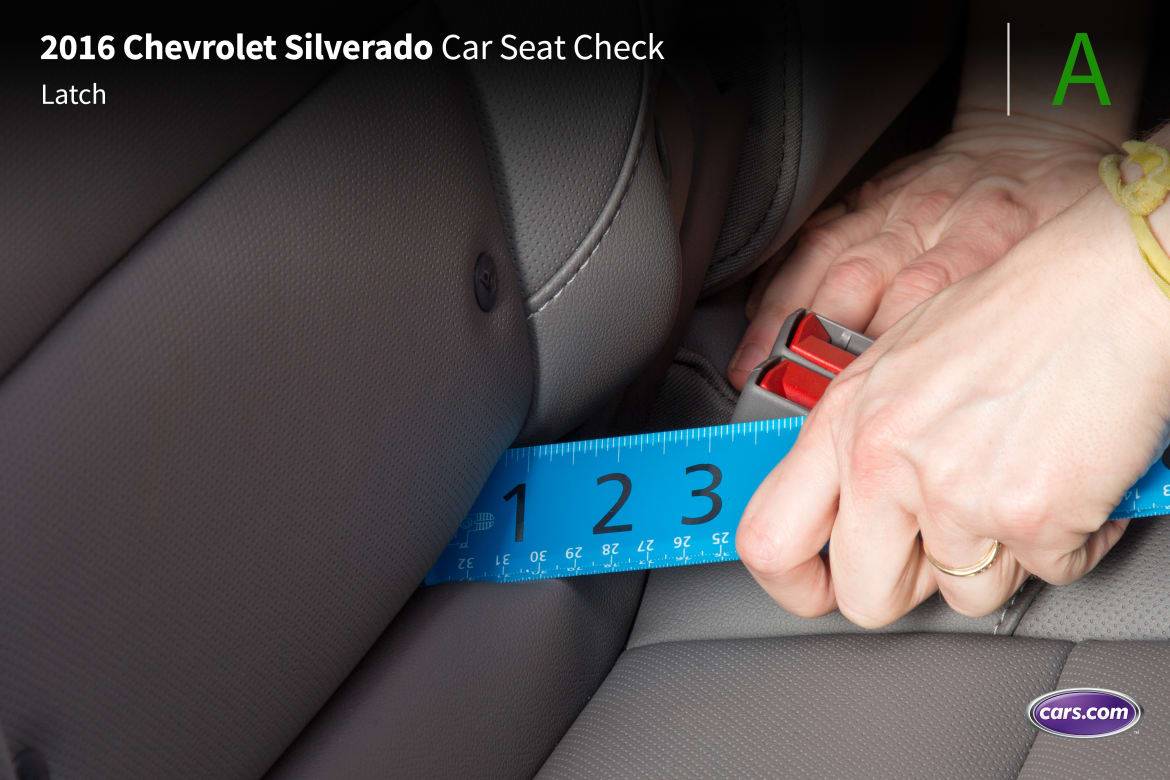
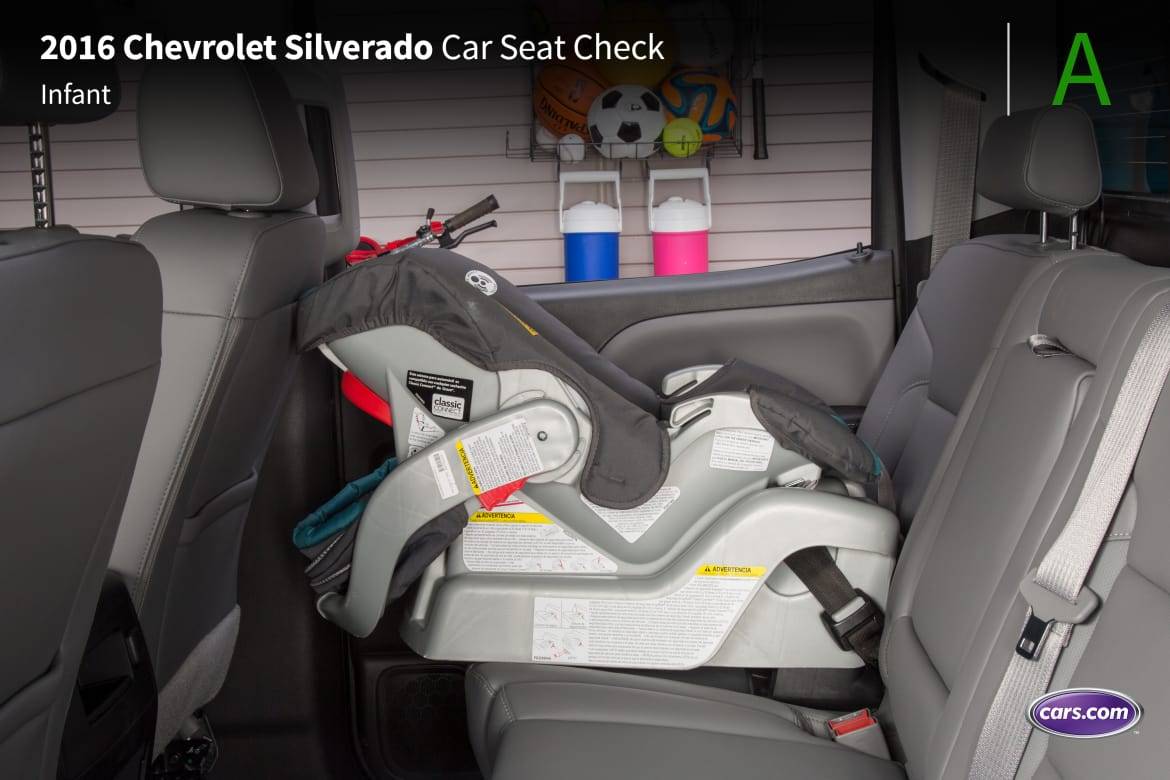
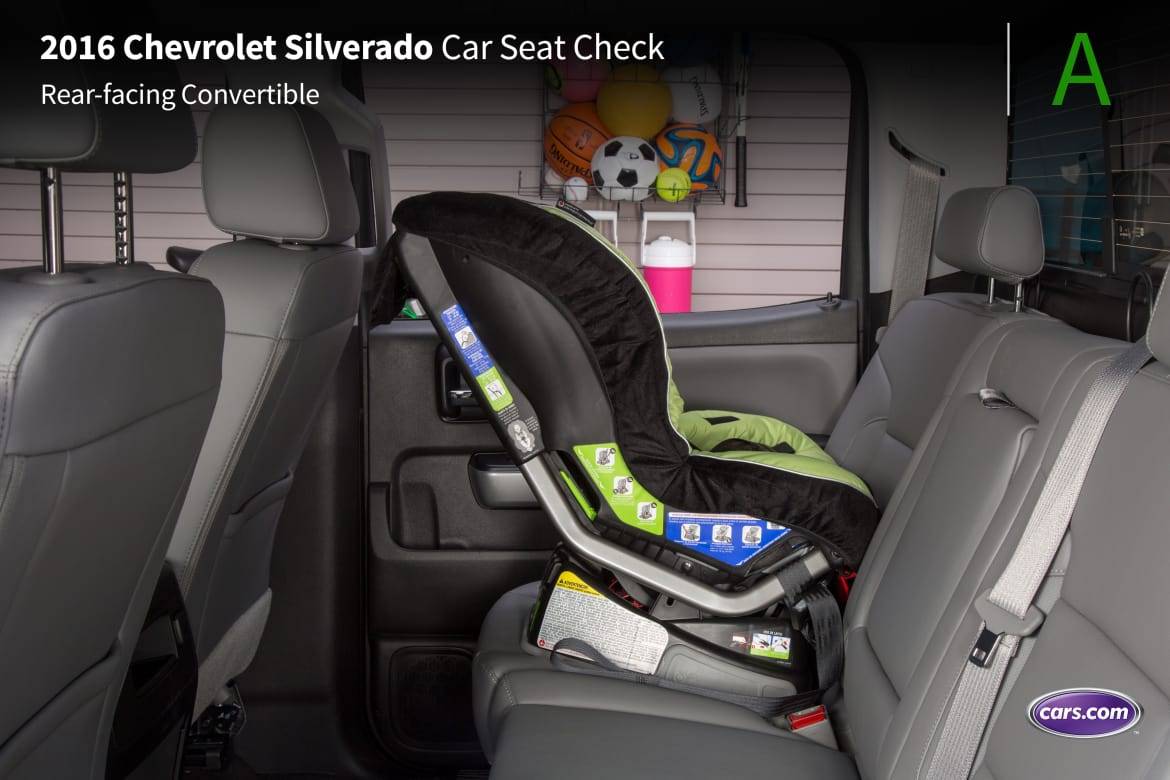
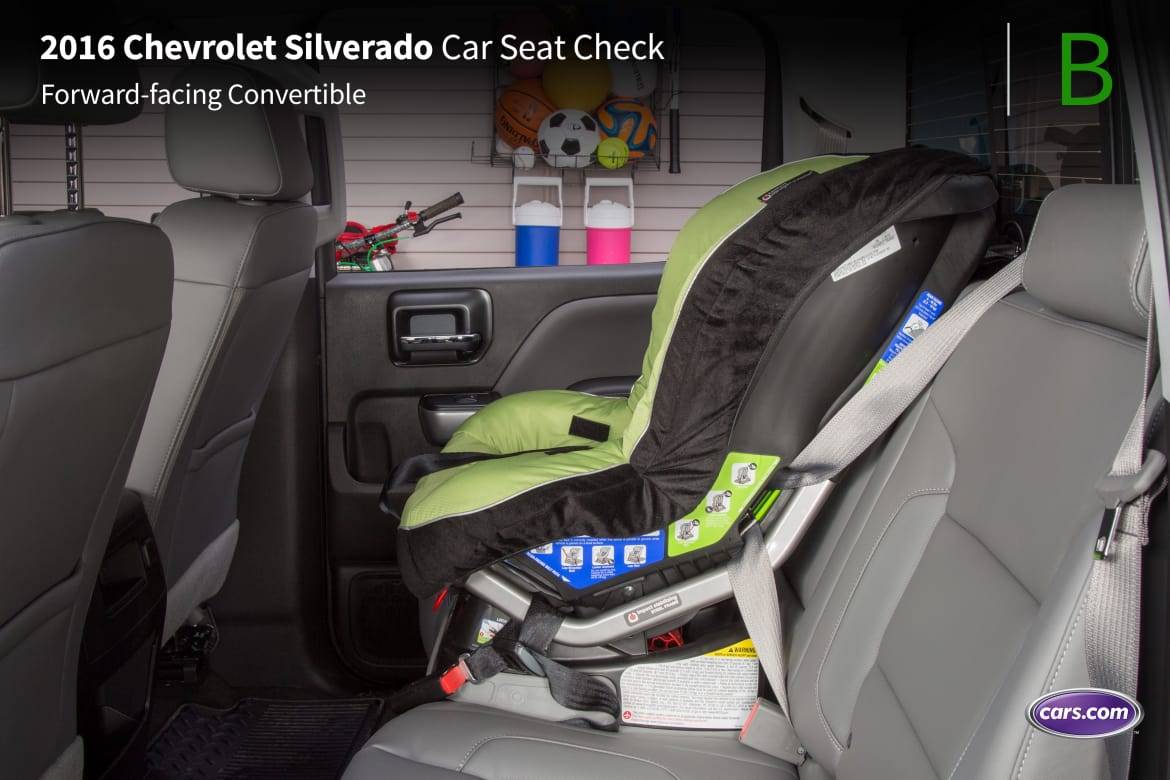
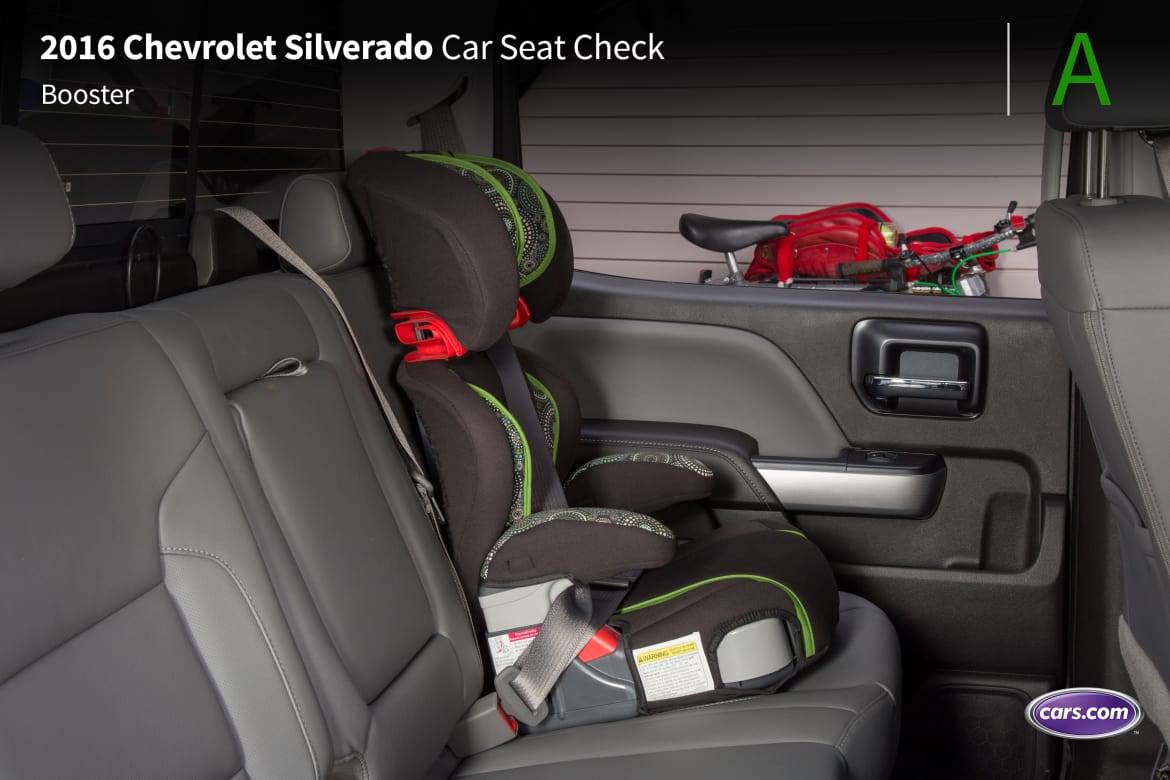





Grading Scale
A: Plenty of room for the car seat and the child; doesn’t impact driver or front-passenger legroom. Easy to find and connect to Latch and tether anchors. No fit issues involving head restraint or seat contouring. Easy access to the third row.
B: Plenty of room. One fit or connection issue. Some problems accessing third row when available.
C: Marginal room. Two fit or connection issues. Difficult to access third row when available.
D: Insufficient room. Two or more fit or connection issues.
F: Does not fit or is unsafe.
About Cars.com’s Car Seat Checks
Editors Jennifer Geiger and Jennifer Newman are certified child safety seat installation technicians.
For the Car Seat Check, we use a Graco SnugRide Classic Connect 30 infant-safety seat, a Britax Marathon convertible seat and Graco TurboBooster seat. The front seats are adjusted for a 6-foot driver and a 5-foot-8 passenger. The three child seats are installed in the second row. The booster seat sits behind the driver’s seat, and the infant and convertible seats are installed behind the front passenger seat.
We also install the forward-facing convertible in the second row’s middle seat with the booster and infant seat in the outboard seats to see if three car seats will fit; a child sitting in the booster seat must be able to reach the seat belt buckle. If there’s a third row, we install the booster seat and a forward-facing convertible. To learn more about how we conduct our Car Seat Checks, go here.
Parents should also remember that they can use the Latch system or a seat belt to install a car seat, and that Latch anchors have a weight limit of 65 pounds, including the weight of the child and the weight of the seat itself.

Editor-in-Chief Jennifer Newman is a journalist with more than 25 years of experience, including 15 years as an automotive journalist at Cars.com. Jennifer leads the Editorial team in its mission of helping car shoppers find the vehicle that best fits their life. A mom of two, she’s graduated from kids in car seats to teens behind the steering wheel. She’s also a certified car-seat technician with more than 12 years of experience, as well as member of the World Car Jury, Automotive Press Association and Midwest Automotive Media Association. LinkedIn: https://www.linkedin.com/in/jennilnewman/ Instagram: @jennilnewman
Featured stories
